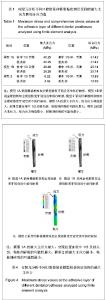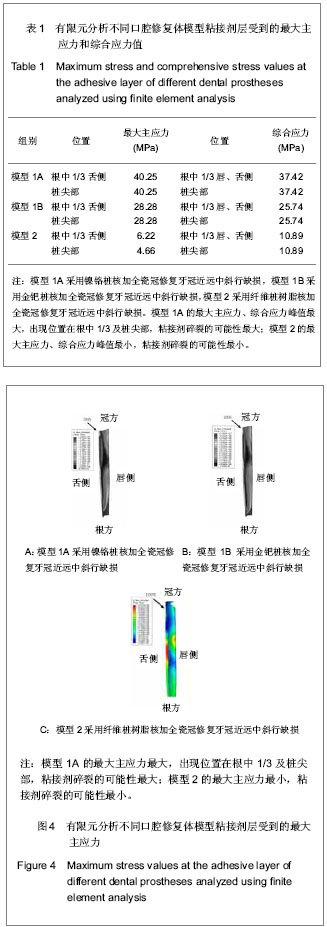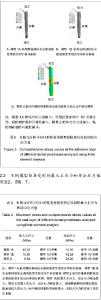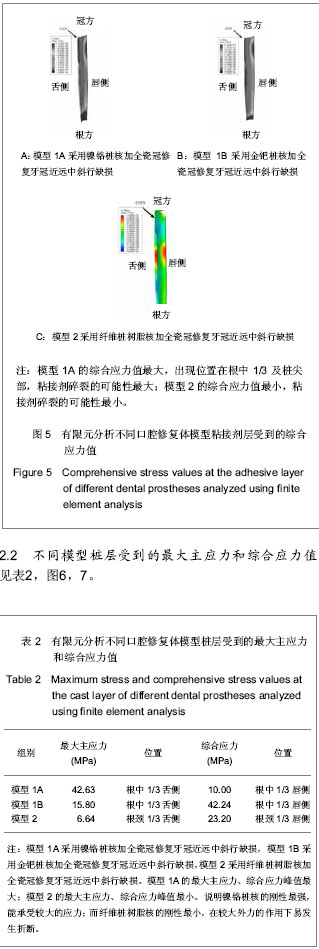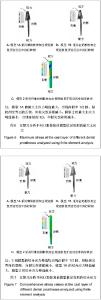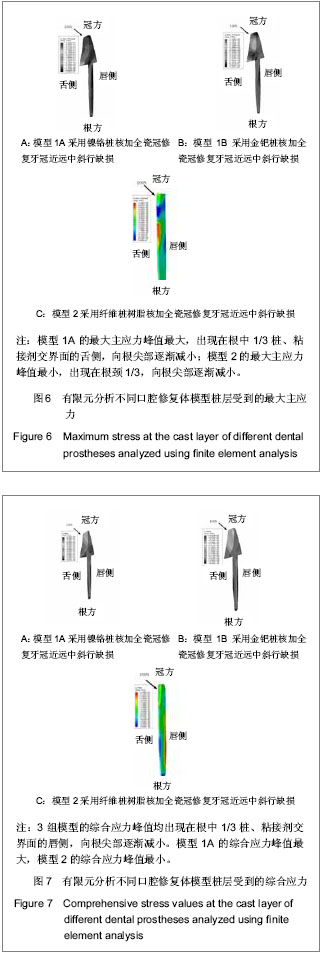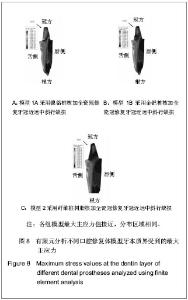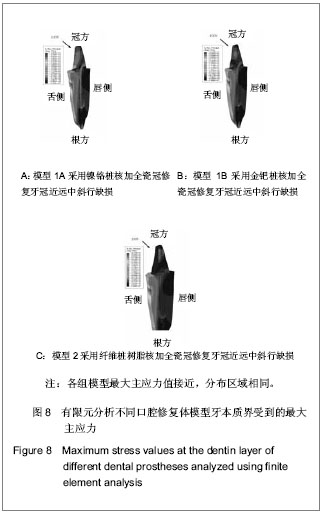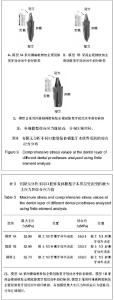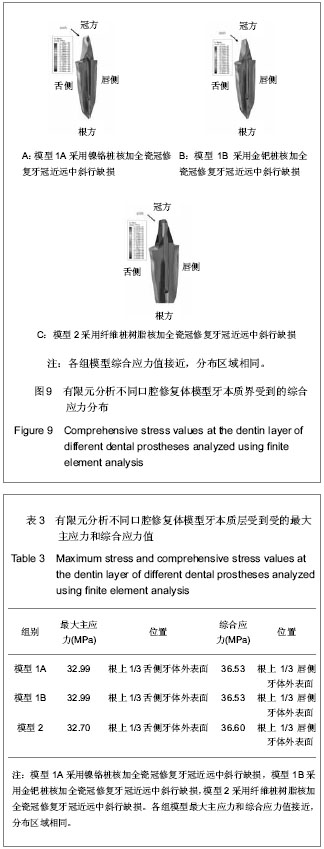| [1] Zhang XH,Wang XZ.The evaluation of the carbon fiber post system on restoration of teeth defect in children.Chin Med J (Engl).2006;119(10):809-813.
[2] 张相皓,佟岱,王新知.碳纤维桩与镍铬合金桩核的临床应用对比观察[J].现代口腔医学杂志,2003,17(3):238-240
[3] 邹波,严伟浩,梁钦业,等.DT Light-post 纤维桩在前牙美容修复中的应用[J].中华医学美学美容杂志,2006,12(5):268-270.
[4] Yang H,Lang LA,Molina A,et al.The efects of dowel design and load dierction on dowel-and-coe rerstorations.J Porsthet Dent.2001;85:558-567.
[5] Ukon S,Moori H,Okimoto K,et al.Influence of difeernt elastic moduli of dowel and core on stress distribution in root. Dent MaterJ.2000;19(1):50-64.
[6] Heydecke G,Butz F,Strub JR.Fracture strength and survival rate of endodonticaly treated maxillary incisors with approximal cavities after restoration with diferent post and core systems.J Dent.2001;29:427-433.
[7] Fredriksson M,Astback J,Pamenius M,et al.A retrospective study of 236 patients with teeth restored by carbon fiber-reinforced epoxy resin posts.J Prosthet Dent.1998; 80: 151-157
[8] Mentink AG,Meeuwissen R,Kayser AF,et al.Survival rate and failure characteristics of the all metal post and core restoration. J Oral Rehabil. 1993;20(5):455-461.
[9] Mannocci F,Sheriff M,Watson TF.Three-point bending test of fiber posts. J Endod.2001;27:758-761.
[10] Naumann M,Preuss A,Rosentritt M.Effect of incomplete crown ferrules on load capacity of endodontically treated maxillary incisors restored with fiber posts, composite build-ups, and all-ceramic crowns: an in vitro evaluation after chewing simulation.Acta Odontol Scand.2006;64(1):31-36.
[11] Wakabayashi N,Ona M,Suzuki T,et al.Nonlinear finite element analyses: Advances and challenges in dental applications.J Dent.2008;36: 463-471.
[12] Ichim I,Kuzmanovic DV,Love RM.A finite element analysis of ferrule design on restoration resistance and distribution of stress within a root. Int Endod J.2006;39(6):443-452.
[13] Pierrisnard L,Bohin F,Renault P,et al.Corono-radicular reconstruction of pulpless teeth: a mechanical study using finite element analysis. J Prosthet Dent.2002;88(4):442-448.
[14] Goldman M,Vitre RD,Pier M.Effect of the dentin smeared layer on tensile strength of cemented posts.J Prosthet Dent.1984;52(4):485-488.
[15] Ruemping DR,Lund MR,Schnell RJ.Retention of dowels subjected to tensile and torsional forces.J Prosthet Dent. 1979;41(2):159-162.
[16] 刘呈胜,郭西林.浅谈桩核冠的种类及制作[J].荆门职业技术学院学报,2004,19(6):89-91.
[17] Deutsch AS,Musikant BL,Cavallari J,et al.Prefabricated dowels:A Literature review.J Prosthet Dent.1983;49(4): 498-502.
[18] Kwiat kowski S.A preliminary consideration of the glassceramic dowel post and core.Int J Prosthodont.1989; 2(1):51.
[19] Durt B,Reynaud M,Durt F.Un nouveau concept dereconstitution. corono—radiculare:Le Compesipest.Dent France.1990;60:131-141.
[20] Meyeberg KH,Luthy H,Scharer P.Zirconium posts.A new all-ceramic-concpt for nonvital abutment teeth.Esthet Dent. 1995;7(2):73-80.
[21] Bergman B,Lundquist P,Sjogren U,et al.Restorative and endodontic results after treatment with cast posts and cores.J Prosthet Dent.1989;61:10-15.
[22] 孙佳凝,赵云凤,高宁.牙科合金材料的生物相容性及影响合金离子析出的因素[J].国外医学:口腔医学分册,2003,30(3):212-214.
[23] 邓旭亮,胡晓阳,李国珍,等.五种全冠修复合金材料的细胞毒性研究[J].现代口腔医学杂志,1999,13(3):173-175.
[24] 汪大林,徐君伍,于家斗.钛在口腔修复医学中的应用[J].稀有金属材料与工程,1993,22(3):61-66.
[25] Akkayan B,Caniklioglu B.Resistance to fracture of crowned teeth restored with different post systems.Eur J Prosthodont Restor Dent.1998;6(1):13-15.
[26] Eskitascioglu G,Belli S,Kalkan M.Evaluation of two post core systems using two different methods(fracture strength test and a finite elemental stress analysis).J Endod.2002;28(9): 629-633.
[27] Rekow D.Computer-auded desigh and manufacturing in dentistry:a review of the state of the art.J Prosthet Dent. 1987;58(4):512-516.
[28] Torbjomer A,Karlsson S,Syverud M,et al.Carbon fiberreinforced root canal posts.Mechanical and cytotoxic properties.Eur J Oral.1996;104:605-611.
[29] Morgano SM,Brackett SE.Foundation restorations in fixedprosthodon-tics:current knowledge and future needs.J Prosthet Dent.1999;82(6):643-657.
[30] Ricketts DN,Tait CM,Higgins AJ.Post and core systems, refinement to tooth preparation and cementation.Br Dent J.2005;198(9):533-541.
[31] Mendoza DB,Eakle WS,Kahl EA,et al. Root reinforcement with a resin-bonded preformed post.J Prosthet Dent.1997; 78(1):10-14. |
